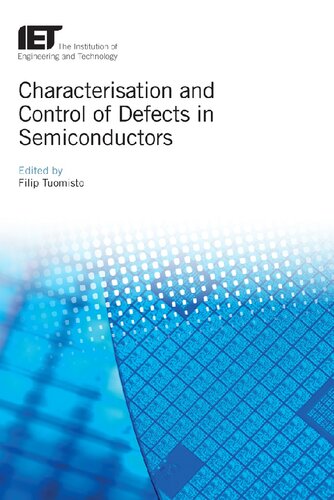

Most ebook files are in PDF format, so you can easily read them using various software such as Foxit Reader or directly on the Google Chrome browser.
Some ebook files are released by publishers in other formats such as .awz, .mobi, .epub, .fb2, etc. You may need to install specific software to read these formats on mobile/PC, such as Calibre.
Please read the tutorial at this link: https://ebookbell.com/faq
We offer FREE conversion to the popular formats you request; however, this may take some time. Therefore, right after payment, please email us, and we will try to provide the service as quickly as possible.
For some exceptional file formats or broken links (if any), please refrain from opening any disputes. Instead, email us first, and we will try to assist within a maximum of 6 hours.
EbookBell Team

5.0
38 reviewsUnderstanding the formation and introduction mechanisms of defects in semiconductors is essential to understanding their properties. Although many defect-related problems have been identified and solved over the past 60 years of semiconductor research, the quest for faster, cheaper, lower power, and new kinds of electronics generates an ongoing need for new materials and properties, and so creates new defect-related challenges.
This book provides an up-to-date review of the experimental and theoretical methods used for studying defects in semiconductors, focussing on the most recent developments in the methods. These developments largely stem from the requirements of new materials – such as nitrides, the plethora of oxide semiconductors, and 2-D semiconductors - whose physical characteristics and manufacturing challenges are much more complex than in conventional Si/Ge or GaAs. Each chapter addresses both the identification and quantification of the defects and their characteristics, and goes on to suggest routes for controlling the defects and hence the semiconductor properties. The book provides valuable information and solutions for scientists and engineers working with semiconductors and their applications in electronics.